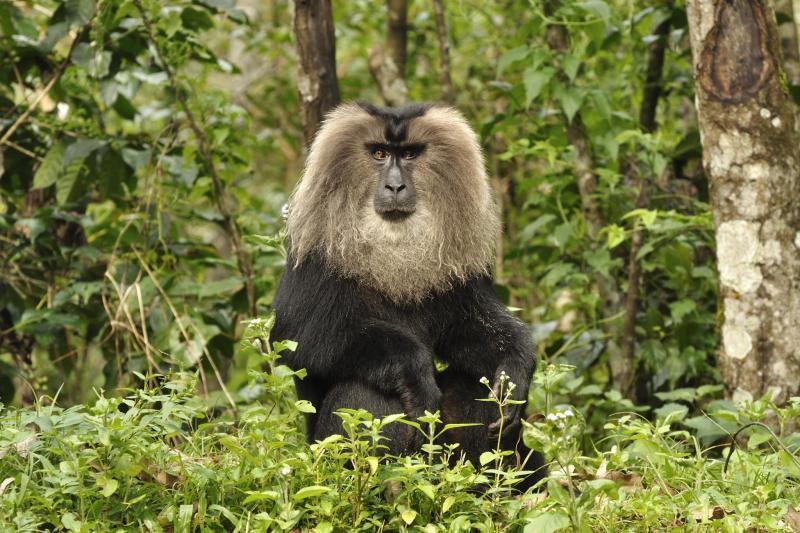
Lion-tailed macaques adapt movements to balance foraging
In the dense forests of the Western Ghats, India, the lion-tailed macaque has evolved to thrive in a unique vertical habitat. Recent research has shed light on the fascinating adaptability of these primates, as they navigate the complexities of foraging while prioritizing safety in the face of human activity.
Lion-tailed macaques, also known as the “bearded macaques” due to their distinctive long hair, are an endemic species of the Western Ghats. They inhabit the mid-level canopies of the forests, where they feed on fruits, leaves, and insects. A recent study, published in the journal PLOS ONE, has delved into the remarkable strategies employed by these primates to balance their foraging needs with the risks posed by human activity.
Mid-level canopies: A safe haven
The study, conducted by researchers from the Indian Institute of Science and the National Institute of Advanced Studies, found that lion-tailed macaques in the Western Ghats have adapted to inhabit the mid-level canopies of the forests, often near human settlements. This unique habitat provides a safe haven for the primates, allowing them to forage for food while minimizing the risk of encountering humans.
The researchers observed that the macaques tend to avoid the forest floor, where human activity is more prevalent, and instead focus on the mid-level canopies, which are characterized by a dense understory and a rich variety of fruiting trees. This adaptation is crucial for the primates’ survival, as it enables them to capitalize on the abundant food resources in the forest while minimizing the risks associated with human encroachment.
Strategic movement patterns
The study also highlighted the intricate movement patterns of the lion-tailed macaques around fruiting trees and dense patches. The researchers observed that the primates display a strategic approach to foraging, adjusting their movements according to the availability of food resources and the presence of potential threats.
For instance, the macaques were found to be more likely to visit fruiting trees during the day, when human activity is more prominent, than at night, when the forest is quieter. This suggests that the primates are adapting to the changing environment by modifying their foraging behavior to avoid human encounters.
The researchers also noted that the macaques tend to move around fruiting trees in a circular pattern, rather than approaching them directly. This behavior is thought to be an effective way to detect potential threats, such as humans or other predators, while allowing the primates to still access the food resources.
Balancing foraging opportunities and safety
The study’s findings underscore the lion-tailed macaques’ remarkable ability to balance their foraging needs with the risks posed by human activity. The primates’ strategic movement patterns and habitat selection are crucial adaptations that enable them to thrive in a rapidly changing environment.
As human activity continues to encroach upon the forests of the Western Ghats, it is essential to recognize the importance of preserving the lion-tailed macaques’ habitat and the unique adaptations that have enabled them to survive. By understanding the intricacies of the primates’ behavior and habitat use, conservation efforts can be targeted to protect these remarkable creatures and the ecosystems they inhabit.
Conclusion
The study’s findings provide valuable insights into the remarkable adaptability of the lion-tailed macaques, highlighting their ability to navigate the complexities of foraging while prioritizing safety in the face of human activity. As we continue to learn more about these fascinating primates, it is essential to recognize the importance of preserving their habitat and the unique adaptations that have enabled them to thrive in the Western Ghats.
News Source:
https://researchmatters.in/news/study-sheds-light-how-indias-lion-tailed-macaques-navigate-changing-world






